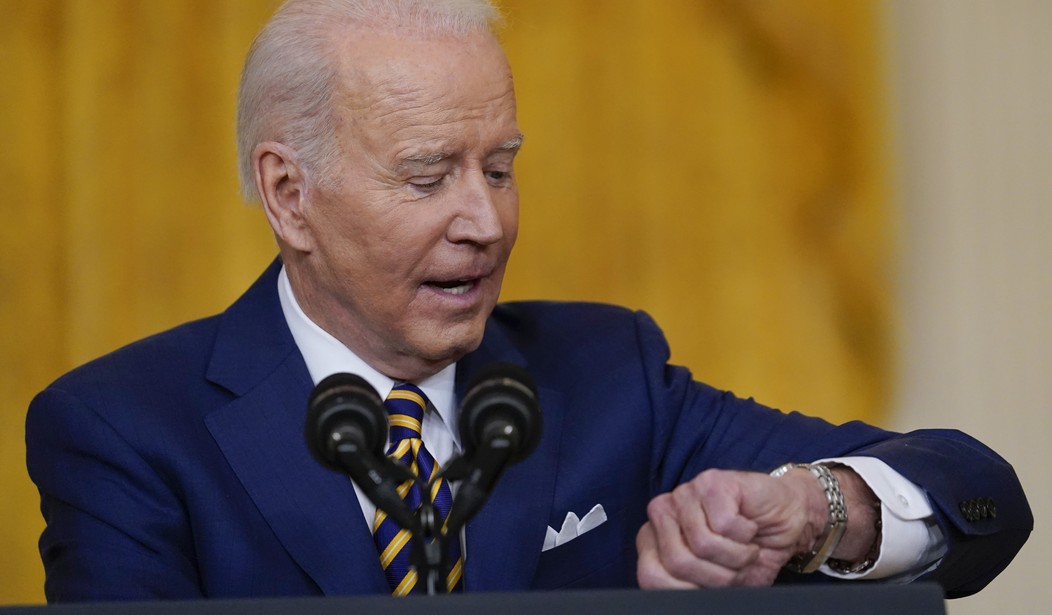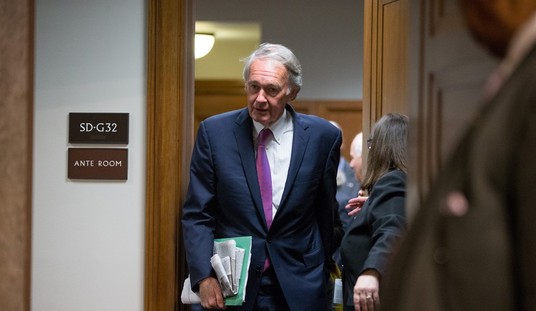When President Joe Biden was sworn in on Jan. 20, 2021, the federal government's debt stood at $27,751,896,236,414.77.
When his first year in office ended on Jan. 20, 2022, it stood at $29,867,021,509,573.92.
That means that during Biden's first 12 months in office, the federal debt grew by more than $2 trillion -- or $2,115,125,273,159.15 to be exact.
How do you put that in perspective?
The United States of America had existed for 210 years -- and 40 presidents had served as this nation's chief executive -- before the debt first topped $2 trillion in 1986.
On Jan. 1, 1790, when President George Washington was serving his first year in office, the total federal debt was $71,060,508.50, according to data published by the U.S. Treasury.
By Jan. 1, 1835, when President Andrew Jackson was in his second term, it had actually dropped to $33,733.05. He then paid it off entirely.
"President Andrew Jackson was a staunch opponent of the existing banking system," NPR reported last August. "He also wanted to get rid of the national debt. In fact, his administration paid off all the interest-bearing debt on Jan. 1, 1835."
"That was the one time in U.S. history when the country was debt free," NPR reported back in 2011. "It lasted exactly one year."
Not surprisingly, the Civil War caused the federal debt to spike. As of July 1, 1860, the year before the Civil War started, the debt was $64,842,287.88. By July 1, 1865, less than three months after Appomattox, it had risen to $2,680,647,869.74.
Recommended
In the wake of the Civil War, the federal debt began to drop again, hitting a postwar low of $1,545,985,686.13 in July 1893.
But then the debt spiked during World War I. When the federal fiscal year of 1917 began on July 1, 1916, the debt was at $3,609,244,262.16. By July 1, 1919, it had risen to $27,390,970,113.12 -- an increase of $23,781,725,850.96 of approximately 659%.
Yet the federal debt would again decline, falling to $16,185,309.831.43 as of June 30, 1930 -- the last day of the federal fiscal year that had included the 1929 stock market crash.
Under President Franklin Delano Roosevelt, who took office on March 4, 1933, and who governed through most of the Great Depression and World War II, the debt would relentlessly climb.
On June 30, 1932, the end of the last fiscal year before Roosevelt took office, it stood at $19,487,002,444.13. At the end of April 1945, the month that Roosevelt died and about four months before the Japanese surrendered to end World War II, it hit $236,223,845.377.06.
By the end of January 1953, the month that President Harry Truman handed power to President Dwight Eisenhower, the debt was $267,402,058,632.56.
By the end of January 1961, the month when President Dwight Eisenhower handed power over to President John Kennedy, the debt had risen to $289,795,752,640.38.
By the end of January 1969, when President Lyndon Johnson ceded office to President Richard Nixon, it had risen to $362,629,668,607.84.
By the end of January 1977, the month that President Gerald Ford was succeeded by President Jimmy Carter, it had jumped to $653,907,000,000.
By the end of January 1981, the month Carter was succeeded by President Ronald Reagan, it stood at $934,073,000,000.
At the end of January 1989, the month that President George H.W. Bush succeeded Reagan, it hit $2,697,957,000,000. Four years later, when President Bill Clinton took over for Bush, it was $4,167,200,000,000.
Eight years after that, when President George W. Bush took office on Jan. 20, 2001, it stood at $5,727,776,738,304.64.
Then it rose to $10,626,877,048,913.08 by January 20, 2009, the day President Barack Obama took office; then to $19,947,304,555,212.49 by January 20, 2017, when President Donald Trump took office; then to $27,751,896,236,414.77 on January 20, 2021, when Biden took the oath.
When Biden became president in the face of a $27.75 trillion debt, the first thing he did was to push for Congress to pass a massive spending bill. This time, the rationale was not a war or a depression but a pandemic.
"President Joe Biden signed the first major legislative achievement of his young presidency Thursday, moving to get a $1.86 trillion COVID-19 aid package into law as quickly as possible," the Congressional Quarterly reported on March 11, 2021.
Given the long-term upward trend in the federal debt in the years since Roosevelt's administration, it is unlikely that politicians in Washington, D.C., will seriously roll it back any time soon.
That means that the American generation that has not yet reached adulthood will eventually bear the burden for the debt that Biden and his predecessors incurred in their name.
Given that the Census Bureau says there were 73,106,000 Americans under 18 years of age in 2020 -- the year Biden was elected -- the $2,115,125,273,159.15 increase in the federal debt since Biden's inauguration equals an added burden of $28,932 for each one of those young people.
Terence P. Jeffrey is the editor-in-chief of CNSnews.com.

























Join the conversation as a VIP Member